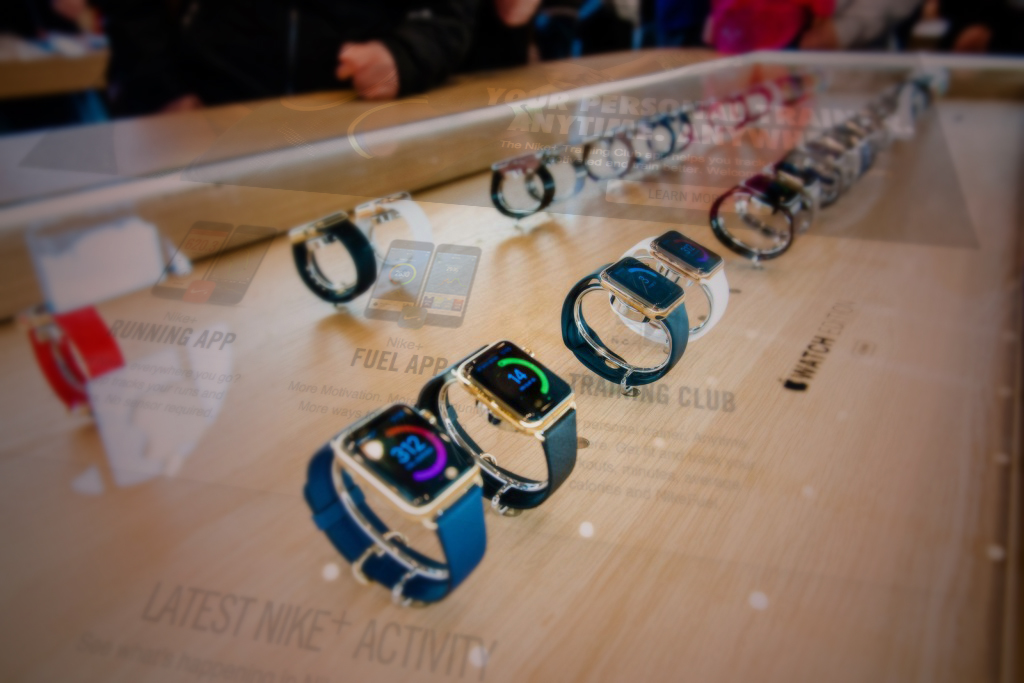In order to maintain competitive advantage, brands must create compelling experiences at every single touch point. And stories are a great way to do that. But how do brands create stories with value as opposed to simply churning out content?
Consumers have increasingly higher expectations about what branded digital experiences are, as well as for experiences in general.
“I’m not a fan of Uber as a company, but I can’t stop using it because it’s so convenient,” said Adam Kleinberg, CEO of interactive agency Traction at Ad Age’s recent digital conference. “The idea of not knowing where my cab is drives me nuts.”
In fact, the best branded efforts blur the lines between product, marketing and the customer experience, said Cindy Chastain, SVP of CX and Design at MasterCard. She uses the example of the Disney MagicBand, a wristband that allows visitors to enter parks, unlock hotel rooms, and buy food and merchandise.
“What’s so phenomenal is that it transforms the park experience. You get access to rooms, line privileges and you can pay for things,” Chastain said. “It transforms the value of the park, but it could come from the marketing team or the product team.”
This incredibly complex effort took Disney three years to roll out, but, she notes, “Being able to think through this kind of thing is becoming even more important.”
That, she said, is because “we moved from a world in which perception of value is based on an experience one has with the core product and the stories we tell around the core product to a world where our perception of value is based on the sum of the interactions with the brand across all touch points.”
“It’s not just about what we say, it’s about what we do, what we enable and the value we bring to consumers,” Chastain added. “That’s the kind of thing they use to judge companies.”
Bad Examples
 While content can certainly be valuable, many brands, like Sears and its Shop Your Way portal, are rushing to push out content as a way to create value and miss the boat, Kleinberg said, likening Sears’ misguided effort to a “Pinterest ripoff.”
While content can certainly be valuable, many brands, like Sears and its Shop Your Way portal, are rushing to push out content as a way to create value and miss the boat, Kleinberg said, likening Sears’ misguided effort to a “Pinterest ripoff.”
“This is not innovative. This is feature bombing,” he adds. “Bring value or die. If you don’t bring value, your customers will go somewhere else and they won’t come back.”
Chastain said this also means losing a brand’s competitive advantage.
“Creating great experiences is absolutely essential for today’s survival,” she said. “Customer experience leaders have a 30 point stock price advantage over those falling behind, so that experience is also your best marketing tool.”
The Tool: Stories
Stories are a system for creating brand meaning because they “help us understand how and where to create value for people,” Chastain said. A traditional story arc that filmmakers use when making movies can also be applied to a brand’s marketing efforts to figure out what stories to tell, as well as how and why.
“Storytelling has ironically become a buzzword because everyone in advertising secretly wishes they worked in Hollywood,” Kleinberg said.
To create meaningful experiences and value, brands must start by observing their customers and then “using [that] observation [along with] common sense and creativity…[to] create meaningful solutions that…understand what that [customer] journey [is] and map that out,” Kleinberg said.
Here are five ways stories can help brands not only understand the customer journey, but also enhance it:
1. Stories Help Show Brands Where To Focus
Chastain points to an R/GA campaign for Volvo in which the agency mapped out the customer journey by thinking about how consumers buy cars from the initial contemplation stage to the actual ownership experience. And in doing so, they realized most consumers already know what type of car body they want and so brand and agency were able to cater web content accordingly to better suit customers’ natural search tendencies.
Kleinberg also uses the example of paint brand Kelly-Moore Paints, which was seeing increased regional competition from larger rival Sherwin-Williams.
“They couldn’t compete dollar for dollar, so they had to focus their efforts on introducing a new color system for design mavens [and offer] tools to indicate their leadership in color,” Kleinberg said.
The resulting campaign, myColorStudio, allows consumers to design and save color palettes and tens of thousands of consumers have done so, Kleinberg said.
2. Stories Help Design Experiences With Real Value
 Kleinberg said his agency was approached by Adobe to help market its Creative Suite, so “we looked at how do people actually use Adobe products to come up with an idea,” which was essentially the realization that consumers like to play around with Photoshop to create news parodies, such as Photoshopping Sarah Palin’s head on the body of a woman holding a gun and wearing an American flag bikini.
Kleinberg said his agency was approached by Adobe to help market its Creative Suite, so “we looked at how do people actually use Adobe products to come up with an idea,” which was essentially the realization that consumers like to play around with Photoshop to create news parodies, such as Photoshopping Sarah Palin’s head on the body of a woman holding a gun and wearing an American flag bikini.
As a result, the agency created a game, Real or Fake, which essentially asks consumers to decide whether a given image is real or fake and rewards certain responses with tutorials.
And, per Chastain, MasterCard has launched a new content marketing platform, Priceless Cities, because the brand is thinking about where the most valuable consumers are and it is trying to provide a hook to download its app by solving real world problems in the travel experience.
The site allows consumers to select their home countries and then choose locations to explore.
3. Stories Help Use Emotion As Triggers
Emotion drives decision making, Chastain said, pointing to Apple, whose homepage for a month leading up to the release of Apple Watch has simply included beautiful images of the product itself.
“It’s not just about driving conversions, it’s about selling,” she said. “Apple understands this.”
So, too, does Nike, whose Nike+ product helped “[move] Nike away from a company that just produced sports apparel to a digital company” and has “grown to become a tool to 32 million members.”
What’s more, Chastain notes the product takes a close look at how consumers run and what those journeys look like and has since integrated features into the experience to keep them coming back like “the voice of an athlete cheering you on during runs. It’s the emotional triggers, understanding where it’s valuable.”
4. Stories Help The Brand Act And Communicate As One Entity
Kleinberg uses the example of a Droga5 campaign for Prudential, Bring your Challenges, which outlined retirement challenges like mapping out a customer journey into a creative execution. These challenges include longevity, procrastination and risk, which the brand created content around.
“It fits seamlessly. It’s all one cohesive story that works seamlessly,” he said.
5. Stories That Are Great Are Naturally Retold
Kleinberg also uses the example of the Yahoo Weather app.
“What a beautiful experience it is. The design is pristine,” he said. “Any time I open the weather, it’s like experiencing a story.”
For her part, Chastain uses the example of MasterCard’s Priceless Surprises effort in which it has surprised cardholders with experiences such as Justin Timberlake showing up unannounced at a fan’s home.
According to the Priceless Surprises website, the brand has surprised nearly 78,000 cardholders to date and Chastain said when the brand was looking into how to scale the program into new platforms to reach new people, they came up with the idea of helping merchants provide priceless experiences to their own customers.
Are you creating stories with value to enhance the customer experience?


